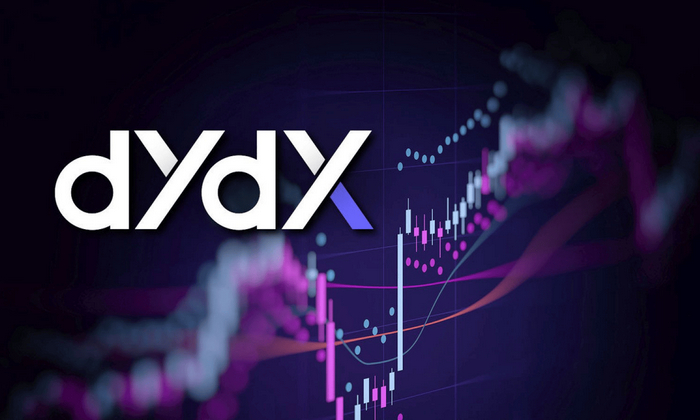-
 Bitcoin
Bitcoin $94,749.4957
0.19% -
 Ethereum
Ethereum $1,771.7486
-2.44% -
 Tether USDt
Tether USDt $1.0000
0.01% -
 XRP
XRP $2.1259
-0.89% -
 BNB
BNB $598.8122
0.00% -
 Solana
Solana $143.9875
-1.23% -
 USDC
USDC $1.0001
0.01% -
 Dogecoin
Dogecoin $0.1676
-1.94% -
 TRON
TRON $0.2450
-1.58% -
 Cardano
Cardano $0.6548
-1.36% -
 Sui
Sui $3.2260
-6.14% -
 Chainlink
Chainlink $13.5077
-1.48% -
 Avalanche
Avalanche $19.6824
0.28% -
 UNUS SED LEO
UNUS SED LEO $8.7093
0.64% -
 Stellar
Stellar $0.2552
-1.94% -
 Toncoin
Toncoin $3.0079
0.92% -
 Shiba Inu
Shiba Inu $0.0...01251
-1.73% -
 Hedera
Hedera $0.1725
-1.41% -
 Bitcoin Cash
Bitcoin Cash $355.6837
0.42% -
 Hyperliquid
Hyperliquid $20.4259
0.45% -
 Litecoin
Litecoin $82.4427
-4.69% -
 Polkadot
Polkadot $3.9246
-0.61% -
 Dai
Dai $1.0001
0.02% -
 Monero
Monero $285.6057
3.43% -
 Bitget Token
Bitget Token $4.2959
-0.11% -
 Ethena USDe
Ethena USDe $1.0003
0.00% -
 Pi
Pi $0.5785
-2.51% -
 Pepe
Pepe $0.0...07812
-1.62% -
 Bittensor
Bittensor $361.1649
-2.34% -
 Uniswap
Uniswap $4.8725
-2.51%
how dydx coin exchange works
dYdX provides a decentralized option for cryptocurrency trading, empowering users with control, low fees, and enhanced security through a peer-to-peer network and Ethereum blockchain settlement.
Nov 05, 2024 at 08:56 pm

How dYdX Coin Exchange Works
dYdX is a decentralized exchange for trading cryptocurrencies. It allows users to trade cryptocurrencies without having to go through a centralized exchange, which can be slow and expensive. dYdX uses a peer-to-peer (P2P) network to match buyers and sellers, and all trades are settled on the Ethereum blockchain.
Key Features of dYdX
- Decentralized: dYdX is not owned or operated by any single entity. Instead, it is controlled by a decentralized autonomous organization (DAO), which is made up of the community of dYdX users.
- Non-custodial: dYdX does not hold custody of users' funds. Instead, users retain custody of their own funds at all times.
- Permissionless: Anyone can use dYdX to trade cryptocurrencies, regardless of their location or identity.
- Fast and inexpensive: dYdX uses a P2P network to match buyers and sellers, which makes trades faster and less expensive than on centralized exchanges.
- Secure: dYdX uses the Ethereum blockchain to settle trades, which makes them secure and immutable.
How to Use dYdX
To use dYdX, you will need to have a Metamask wallet. Metamask is a browser extension that allows you to store your Ethereum tokens and interact with dYdX.
Once you have a Metamask wallet, you can follow these steps to trade cryptocurrencies on dYdX:
- Go to the dYdX website and connect your Metamask wallet.
- Select the cryptocurrency that you want to trade.
- Enter the amount of cryptocurrency that you want to trade.
- Click the "Trade" button.
- dYdX will match you with a buyer or seller who is willing to trade at your price.
- Once the trade is matched, you will need to approve the transaction in your Metamask wallet.
- The trade will then be settled on the Ethereum blockchain.
Fees on dYdX
dYdX charges a small fee for each trade. The fee is paid in DYDX tokens, which is the native token of the dYdX platform. The fee is used to cover the costs of operating the dYdX network.
The fee for each trade is calculated as follows:
- Maker fee: 0.05% of the trade amount
- Taker fee: 0.10% of the trade amount
Benefits of Using dYdX
There are several benefits to using dYdX to trade cryptocurrencies, including:
- Decentralized: dYdX is not owned or operated by any single entity, which makes it more resistant to censorship and manipulation.
- Non-custodial: dYdX does not hold custody of users' funds, which means that users are in control of their own funds at all times.
- Permissionless: Anyone can use dYdX to trade cryptocurrencies, regardless of their location or identity.
- Fast and inexpensive: dYdX uses a P2P network to match buyers and sellers, which makes trades faster and less expensive than on centralized exchanges.
- Secure: dYdX uses the Ethereum blockchain to settle trades, which makes them secure and immutable.
Risks of Using dYdX
There are also some risks associated with using dYdX to trade cryptocurrencies, including:
- Smart contract risk: dYdX uses smart contracts to execute trades. Smart contracts are complex pieces of software, and there is always the risk that they could contain bugs or vulnerabilities.
- Market risk: The cryptocurrency market is volatile, and there is always the risk that the price of a cryptocurrency could fluctuate significantly.
- Liquidity risk: dYdX is a relatively new exchange, and it may not have the same level of liquidity as some of the more established exchanges. This means that it may be difficult to buy or sell large amounts of cryptocurrency at a fair price.
Conclusion
dYdX is a decentralized exchange that allows users to trade cryptocurrencies. It offers several advantages over centralized exchanges, including decentralization, non-custody, permissionless access, speed, and cost-effectiveness. However, there are also some risks associated with using dYdX, including smart contract risk, market risk, and liquidity risk.
Disclaimer:info@kdj.com
The information provided is not trading advice. kdj.com does not assume any responsibility for any investments made based on the information provided in this article. Cryptocurrencies are highly volatile and it is highly recommended that you invest with caution after thorough research!
If you believe that the content used on this website infringes your copyright, please contact us immediately (info@kdj.com) and we will delete it promptly.
- Can $1,500 Flip into over $13,500 in Just a Few Weeks?
- 2025-05-07 02:35:12
- BTFD Coin (BTFD): The Next Big Meme Coin Explosion Could Be Right Under Your Nose
- 2025-05-07 02:35:12
- A small group of crypto traders made nearly $100 million
- 2025-05-07 02:30:12
- Maxine Waters Objects Crypto Market Structure Bill
- 2025-05-07 02:30:12
- While top-tier cryptocurrencies dominate headlines, a quiet contender like Render (RNDR) is gaining traction among savvy investors.
- 2025-05-07 02:25:12
- With 2025 Setting the Stage for Massive Crypto Expansion, Investors Are Scanning the Market for the Top Gainers
- 2025-05-07 02:25:12
Related knowledge

What is Ethereum’s Slashing mechanism and how to punish malicious behavior?
Feb 20,2025 at 03:08am
Key PointsOverview of slashingDifferent types of slashing in EthereumIncentives and consequences of slashingIdentifying and reporting slashed validatorsOngoing discussions and potential improvementsEthereum's Slashing Mechanism: Punishing Malicious BehaviorEthereum's slashing mechanism is an essential tool for ensuring network security and punishing mal...

What is the verifier node of Ethereum and how to become a verifier?
Feb 19,2025 at 06:00pm
The Verifier Node of Ethereum: A Comprehensive GuideKey Points:What is a Verifier Node?How to Become a Verifier NodeResponsibilities and Rewards of a Verifier NodeMinimum Requirements for Becoming a Verifier NodePotential Difficulties in Running a Verifier Node1. What is a Verifier Node?A Verifier Node is an independent entity on the Ethereum network th...

What is Ethereum’s staking, and how to participate and earn money?
Feb 19,2025 at 04:37pm
Key Points:Understanding Ethereum's Staking MechanismSteps to Participate in StakingBenefits and Rewards of StakingSecurity and Risk ConsiderationsTechnical Requirements and Hardware OptionsPotential Challenges and Troubleshooting TipsFAQs on Ethereum StakingWhat is Ethereum's Staking?Proof-of-Stake (PoS) is a consensus mechanism used in blockchain netw...

What is Ethereum’s DAO (Decentralized Autonomous Organization) and how does it work?
Feb 20,2025 at 03:12am
Key PointsDefinition and Structure of a DAOGovernance and Decision-Making in DAOsBenefits and Use Cases of DAOsChallenges and Limitations of DAOsWhat is Ethereum's DAO (Decentralized Autonomous Organization) and How Does It Work?Definition and Structure of a DAOA Decentralized Autonomous Organization (DAO) is an innovative governance and management fram...

What is Ethereum's multi-signature wallet and how to improve security?
Feb 20,2025 at 02:18pm
Key Points:Understanding the Concept of a Multi-Signature WalletBenefits and Drawbacks of Multisig WalletsRequirements for Setting Up a Multisig WalletStep-by-Step Guide to Generating a Multisig WalletImplementing Strategies for Enhanced Security1. Understanding the Concept of a Multi-Signature WalletA multi-signature (multisig) wallet in the Ethereum e...

What is Ethereum's oracle and how to provide data for smart contracts?
Feb 21,2025 at 01:30am
Key Points:Understanding the concept of oracles in EthereumExploring different types of oraclesDetailed guide on how to provide data for smart contractsAddressing potential challenges and considerationsWhat is Ethereum's Oracle?Oracles are crucial components in the Ethereum ecosystem, enabling smart contracts to access real-world data and off-chain even...

What is Ethereum’s Slashing mechanism and how to punish malicious behavior?
Feb 20,2025 at 03:08am
Key PointsOverview of slashingDifferent types of slashing in EthereumIncentives and consequences of slashingIdentifying and reporting slashed validatorsOngoing discussions and potential improvementsEthereum's Slashing Mechanism: Punishing Malicious BehaviorEthereum's slashing mechanism is an essential tool for ensuring network security and punishing mal...

What is the verifier node of Ethereum and how to become a verifier?
Feb 19,2025 at 06:00pm
The Verifier Node of Ethereum: A Comprehensive GuideKey Points:What is a Verifier Node?How to Become a Verifier NodeResponsibilities and Rewards of a Verifier NodeMinimum Requirements for Becoming a Verifier NodePotential Difficulties in Running a Verifier Node1. What is a Verifier Node?A Verifier Node is an independent entity on the Ethereum network th...

What is Ethereum’s staking, and how to participate and earn money?
Feb 19,2025 at 04:37pm
Key Points:Understanding Ethereum's Staking MechanismSteps to Participate in StakingBenefits and Rewards of StakingSecurity and Risk ConsiderationsTechnical Requirements and Hardware OptionsPotential Challenges and Troubleshooting TipsFAQs on Ethereum StakingWhat is Ethereum's Staking?Proof-of-Stake (PoS) is a consensus mechanism used in blockchain netw...

What is Ethereum’s DAO (Decentralized Autonomous Organization) and how does it work?
Feb 20,2025 at 03:12am
Key PointsDefinition and Structure of a DAOGovernance and Decision-Making in DAOsBenefits and Use Cases of DAOsChallenges and Limitations of DAOsWhat is Ethereum's DAO (Decentralized Autonomous Organization) and How Does It Work?Definition and Structure of a DAOA Decentralized Autonomous Organization (DAO) is an innovative governance and management fram...

What is Ethereum's multi-signature wallet and how to improve security?
Feb 20,2025 at 02:18pm
Key Points:Understanding the Concept of a Multi-Signature WalletBenefits and Drawbacks of Multisig WalletsRequirements for Setting Up a Multisig WalletStep-by-Step Guide to Generating a Multisig WalletImplementing Strategies for Enhanced Security1. Understanding the Concept of a Multi-Signature WalletA multi-signature (multisig) wallet in the Ethereum e...

What is Ethereum's oracle and how to provide data for smart contracts?
Feb 21,2025 at 01:30am
Key Points:Understanding the concept of oracles in EthereumExploring different types of oraclesDetailed guide on how to provide data for smart contractsAddressing potential challenges and considerationsWhat is Ethereum's Oracle?Oracles are crucial components in the Ethereum ecosystem, enabling smart contracts to access real-world data and off-chain even...
See all articles




















































































